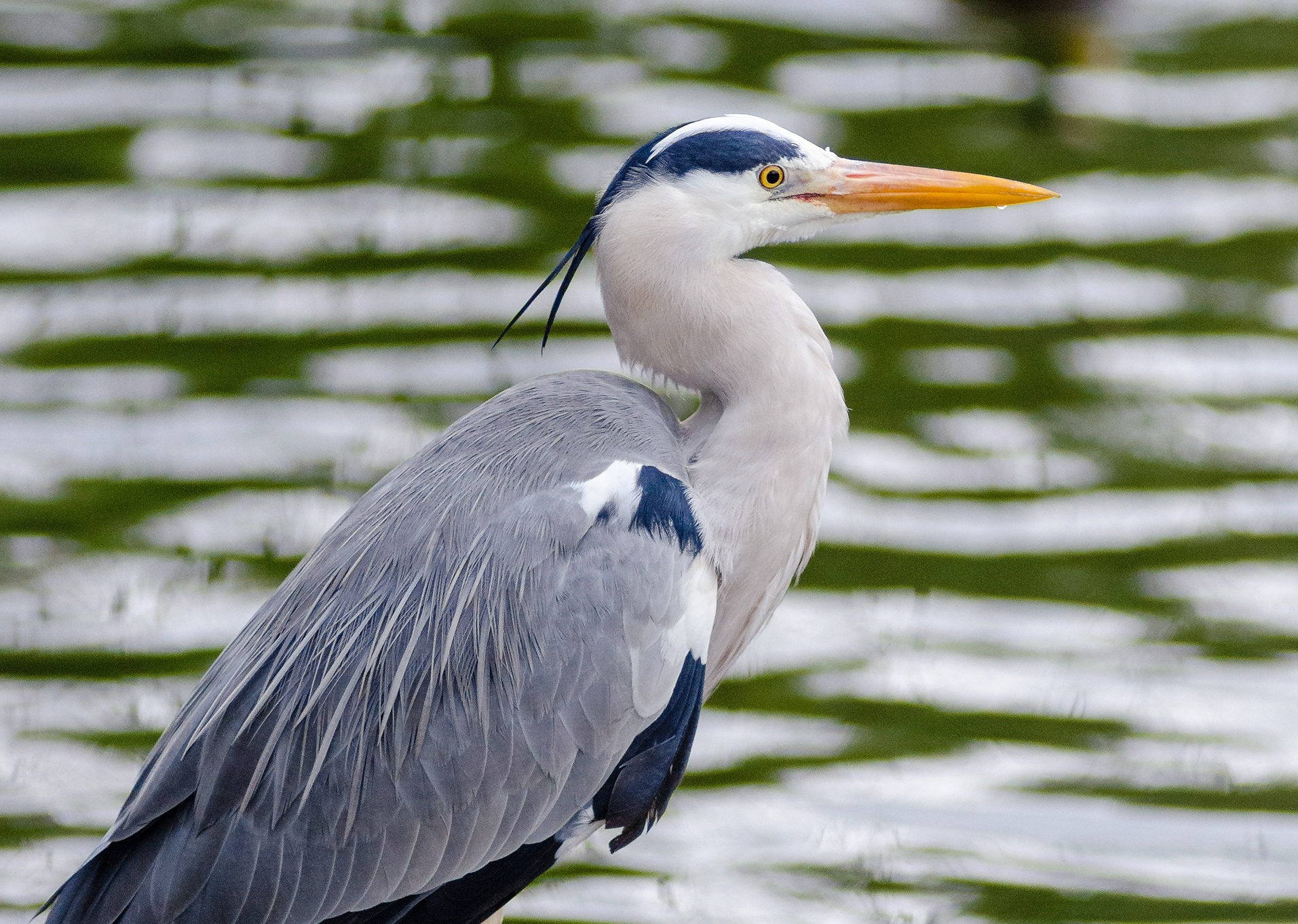At The Water’s Edge

Braak! Braak! Braak! The raspy call of the Great Blue Heron suddenly sounds overhead. I let my kayak drift as the large gray bird lifts itself from the shallows at the river’s edge, beating its wide wings slowly, and flies a short way up river to settle down again at another fishing spot.
The quiet waters of the Peconic River Estuary provide extensive habitat for birds like the Great Blue Heron and Belted Kingfisher. These birds depend on water habitats for their survival and Long Island’s estuarine and riparian or riverside environments provide ample opportunities to view these birds in the wild. Kayak access sites are plentiful and an hour of paddling on a summer afternoon is something I always can find time for.
With their long legs and large toes, herons are adapted to hunting for food at the water’s edge. Great Blue Herons can also be seen hunting in salt water meadows. Standing still, statue-like, they watch for prey to come close. With a lightning fast strike, their strong, pointed bills snap up a small fish, frog, or snake — even a rat may be on the menu. To identify a Great Blue Heron in flight, look for the characteristic bent back neck, slow wingbeats, and long legs trailing behind.
Adult birds can be distinguished by their blue-gray colors and black eye stripe. Most adult Great Blue Herons migrate farther north than Long Island to breed. Gathering in colonies called heronries, mating pairs construct large stick nests high in trees. First-year birds are non-breeders, identifiable by their overall gray plumage, and are the majority of the birds seen in summer on Long Island. In the fall, adults returning south use our waterways as a stop over to rest and feed. Young birds can be found in our area all year if open water is available.
Paddling around a bend in the river I hear the loud, rattling call of another bird common at the water’s edge, the Belted Kingfisher. I watch the bird dive and then rise in a shower of shimmering droplets, a silver fish in its bill. The Kingfisher is easy to identify in the field by its blue-gray color above, white under the wings and tail, and a characteristic blue-gray crest. Male Belted Kingfishers have one blue-gray band on a white breast; females have a blue and a rusty red band.
Kingfishers nest in burrows they dig in sand or gravel riverbanks. Suitable nesting banks are not always available along Long Island rivers, so the birds will use what they can find, including old earthen embankments along the railroad. Kingfishers can be found on the East End all year. Next time you are out paddling or walking along the water’s edge, listen and look for these entertaining birds.
Melanie Meade is the Education and Outreach Coordinator at the South Fork Natural History Museum in Bridgehampton.









